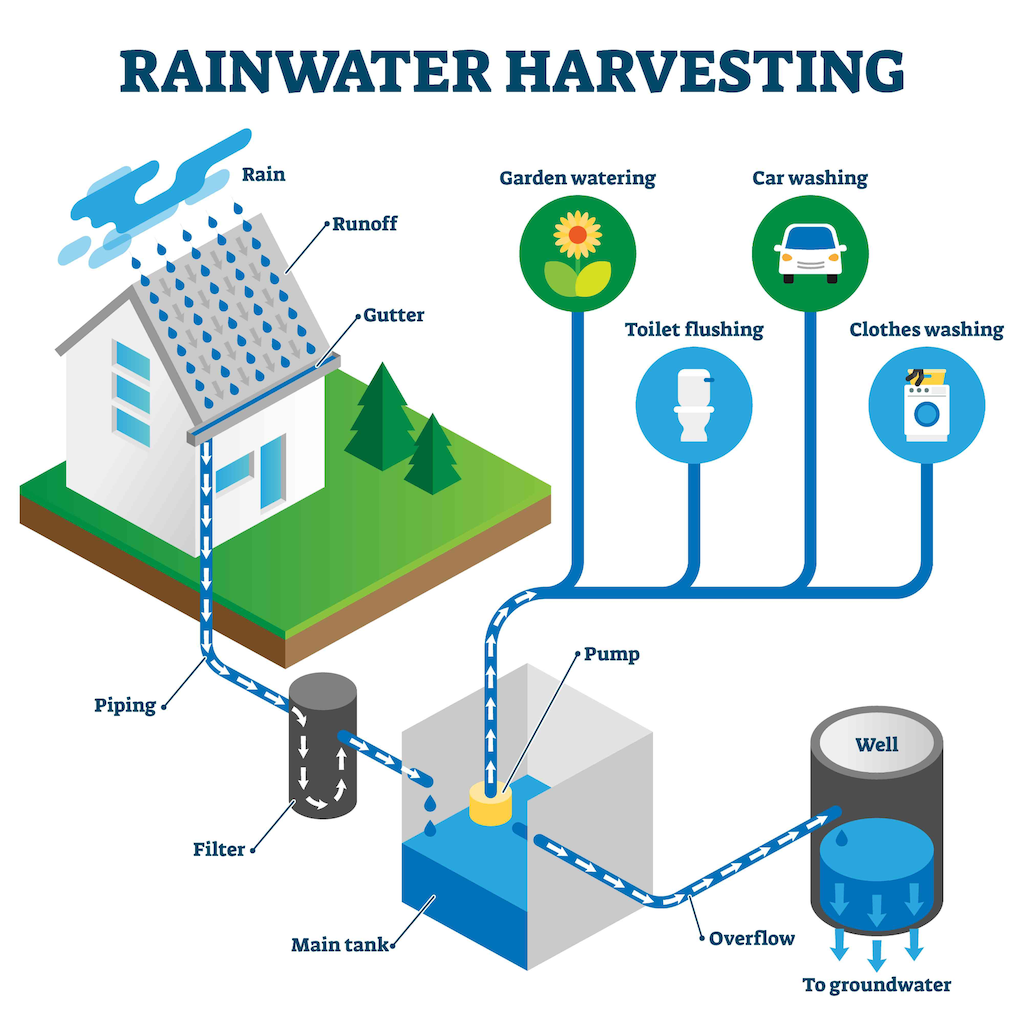Rain Water Harvesting

What is it?
Rainwater harvesting is a basic approach for collecting and storing rainwater for later use. Rainwater is collected and stored using artificially constructed mechanisms in this procedure. Rainwater is collected from surfaces where rainfalls can be filtered, stored, and used in various ways or used immediately for recharge. This method is unfettered by impurities, has a lower storage cost, and requires little maintenance other than occasional cleaning.
Major Techniques:
1. Surface Runoff Harvesting:
Surface water may be stored by diverting minor creeks and streams into surface or subsurface reservoirs. It can offer water for agriculture, animals, and ordinary household usage. In metropolitan settings, surface runoff collection is the best option. Rooftop rainwater/storm runoff may be collected in cities using recharge pits, recharge trenches, tube-wells, and recharge wells.
2. Groundwater recharge:
The groundwater recharge is the process through which surface water or precipitation infiltrates the soil and percolates downwards to the water table. It is of two types. An artificial subsurface Groundwater recharge refers to strategies for releasing water below the earth's surface (most often refilling wells). In contrast, water percolates through the soil before entering the groundwater aquifer in surface groundwater recharge. Some other advantages include conservation or disposal of floodwaters, control of saltwater intrusion, storage of water to reduce pumping and piping costs, and temporary regulation of groundwater abstraction.
Major Advantages of Rain Water Harvesting:
1. Reduces Erosion and Flooding:
Rainwater harvesting may assist the environment in a variety of ways. It can help to prevent erosion in gardens and near downspouts. It can also be used to manage stormwater runoff.
2.Lowers Water Bills:
Having a water supply reduces reliance on municipal sources in the event that the water becomes polluted and also helps in lowering water bills.
3.Reduces the amount of groundwater used:
Digging deeper wells is not only costly, but it also has the potential to harm the ecosystem by collapsing the soil where the water used to be. Rainwater can be collected and stored, then used during droughts or when groundwater sources are exhausted.
4.It's suitable for non-drinking purposes:
Because rainwater is gentle, it can reduce the amount of detergent used for washing clothing and dishes. Rainwater may also be utilized to wash cars, bathe pets, and clean practically anything that requires water.
5.Can Help Plants Grow Better
Salt accumulation in plants and soil may be flushed off using gathered water. Rainwater that has been collected is often devoid of a variety of pollutants and man-made toxins.
Indian Setting:
Different regions of the country practice a variety of rainwater harvesting and artificial recharge methods. Some ancient rainwater harvesting methods followed in India include Madakas, Ahar Pynes, Surangas, Taankas, etc. In old times, indigenous people have found water for drinking and irrigation even in highly arid landscapes through wells, filter ponds, and other catchment systems. These days most of the water scarcity issues arise due to lack of appropriate water conservation methods.
References:
1- Water Conservation : Rainwater Harvesting - MyGov Blogs
2- Subsurface Groundwater Recharge | SSWM - Find tools for sustainable sanitation and water management!
3- The Many Benefits and Advantages of Rainwater Harvesting (watercache.com)
4- Rainwater Harvesting: 5 Advantages & Disadvantages | Accurate Leak & Line
5- The ancient ingenuity of water harvesting : Anupam Mishra works to preserve rural India s traditional rainwater harvesting techniques. | India Water Portal